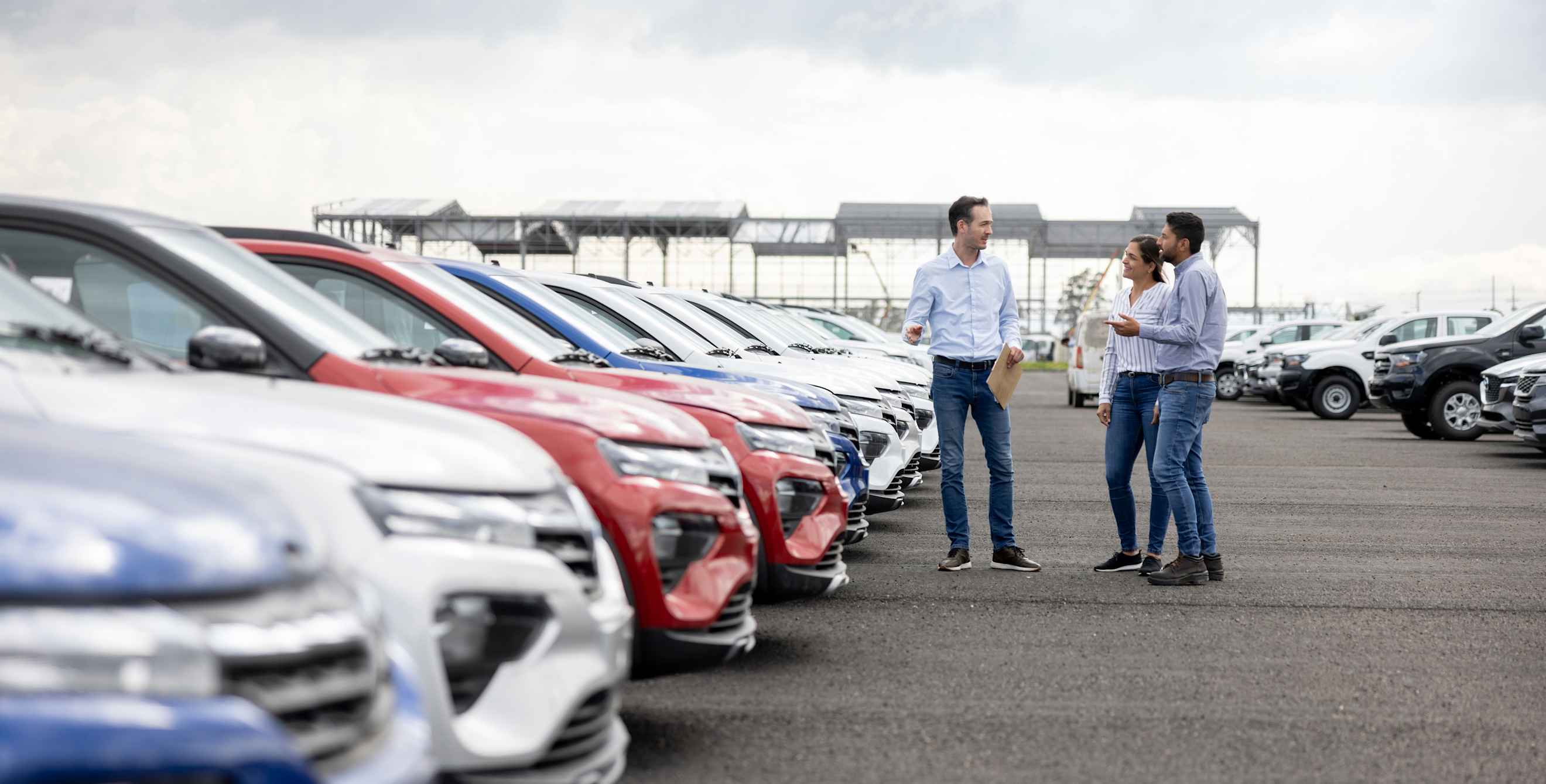
12 Most Common Car-Buying Mistakes
And how to avoid them.

The Internet has made car shopping easier than ever, yet the biggest mistake most buyers make is not arming themselves with enough research—about prices, reliability and financing—before stepping onto a dealer’s lot. Even when they do their homework, emotions often give way to reason and they walk out with more than they bargained for.
To pay for options such as fancy rims, heated seats, self-driving features and entertainment systems, many Americans are extending loan terms and ending up with negative equity, meaning they owe more than their cars are worth. If they total the car or need to sell it, they must come up with the difference in cash.
Whether you are in the market for a new or used car, here are some of the most common mistakes people make, and ways to avoid them.
Not Doing Research
People who haven’t figured out what they want and can afford are most likely to fall prey to persuasive, perhaps even deceptive, sales tactics.
“The more research you can do from the comfort and safe space of your own home,” the less likely you will make decisions you regret, said Luke Dean, a financial planning professor at Utah Valley University.
You can find enough information to make your head spin on websites such as Edmunds, Kelley Blue Book, Car and Driver, TrueCar, Road and Track, Consumer Reports, J.D. Power, and FTC.gov. This includes ratings, reviews, prices, and/or buying advice.
Pay close attention to safety and reliability ratings. The National Highway Transportation Safety Administration and Insurance Institute for Highway Safety publish the most reliable safety ratings.
J.D. Power and Consumer Reports both rate Toyota and its sister company Lexus rank as tops for dependability and Chrysler as the worst.
Many dealers post their inventories online. But if you see a sweet deal, make sure the advertised car exists (check for a Vehicle Identification Number or VIN) and that the price includes everything except tax, title, and license, which can add thousands to the bottom line.
“Our advice to people: If they have seen ads, looked at inventory on the internet, confirm that what they want is on the lot and get an out-the-door price from the dealer, preferably in writing, before you leave home,” said FTC attorney Dan Dwyer.

Not Lining Up Financing Beforehand
People who don’t separate the price of the car from the loan can overpay for either or both. Before hitting the showroom, get preapproved for a low-rate loan from a bank or credit union. Dealers often advertise low- or zero-rate financing, “but if you look at the fine print, it says based on approved credit,” and there’s no guarantee you will be approved, said Rosemary Shahan, president of Consumers for Auto Reliability and Safety.
Some buyers drive off with what they think is an amazing rate from the dealer, only to get a call later saying their loan did not go through and they need to come back and renegotiate a loan, with worse terms. This practice, known as yoyo financing, “is very outrageous but quite prevalent,” Shahan said. To avoid it, scour the loan documents for words such as “conditional” and ask for written verification that the approval is final. Or use outside financing.
Paying for Options You Don’t Need
“People like luxury features. Once they were exposed to heated seats, they cannot live without heated seats,” said Tony Quiroga, editor-in-chief of Car and Driver. By forgoing pricey extras, “you can get the same car for thousands less with the same driving experience.”
Unfortunately, it can be hard to find base models on dealer lots. In 2023, Dean waited several months to get a base model Hyundai Elantra hybrid. But it pays to be patient.
Some “true safety features” are worth paying for, said Alex Knizek, associate director of Auto Test Development with Consumer Reports. These include automatic emergency braking, blind-spot warning, and rear cross-traffic warning. Options such as self-driving and lane assist “are more convenience features and not as necessary as safety features,” he said.
Focusing on Monthly Payment, Not Price
Dealers love to get buyers “wrapped up into a monthly payment discussion. That is a valuable tool because there are a lot of knobs they can turn, such as changing the loan term from 48 to 60 months. That way, you don’t see the overall cost until you are in the finance department,” where it shows up as a line item, Quiroga said.
When dealers “focus on a monthly payment, it can hide a multitude of sins,” Dwyer said. “If a dealer says, ‘Consider adding this protection product, it only costs $5 a month,’ over 60 or 72 months, plus the fact you are financing that, it can add up,” Dwyer said.
The best way to lower your monthly payments is to negotiate a lower price. Markups—such as delivery, dealer prep, and market adjustment fees—are usually negotiable, Knizek said.
If you have your heart set on one car, look for two or three others in the same category with similar safety and reliability ratings. Let the dealer know you’re looking at them. If the dealer won’t meet your price, walk away. “Even if they say it won’t be available later, it probably will be,” Quiroga said.
Not Reading the Fine Print
A common mistake is “not going through (paperwork) with a fine tooth comb,” Dwyer said. “Things have a funny way of making their way in at the end. If there is something you don’t understand, ask about it.”
The dealer might automatically include and charge for dubious extras you didn’t ask for, such as nitrogen-filled tires or etching the VIN onto the windshield, Knizek said
Many dealers have shifted from paper to electronic contracting, which is the digital creation, signing, and filing of purchase and financing documents. Dealers say it’s faster and more accurate, but it can be abused, Shahan said.
“One problem is that, if you don’t see what is on the screen until it is printed off with your signature, they can play games. They will say your monthly payment is X, your total payment is Y, it comes off with your e-signature, they put it in an envelope. If you ever read it, you find they are charging you a lot more than you agreed to,” Shahan said.
“Say you want it printed on paper before signing anything,” she added. Better yet, take it home and read it. “Until you sign, you are in the driver’s seat.”

Top Used-car Mistakes
While used-car buyers make some of the errors above, here are the top ones that apply to pre-owned vehicles.
Being Too Trusting
Most sellers will say their car is in great shape, but according to Kelley Blue Book, only 2% of used cars are in excellent condition, 28% are very good, 50% are good and 20% are fair.
Smart Tip: Consumer Reports recently expanded its ratings and recommendations to used cars.
Not Getting Your Own Vehicle History Report
A report from a company such as Carfax can provide valuable information such as whether the car has been stolen or in an accident reported to an insurance company or police. The owner may provide you one, but it could be outdated or altered.
Not Making Sure the Owner has a Clear Title
A clear title means there is no loan or lien on it. Ask to see the title and the owner’s driver’s license. Make sure it’s the same person and address.
Some unlicensed used-car dealers pose as private sellers. They post an ad or for-sale sign on the car and tell potential buyers it’s their personal car. Often these are salvaged, flooded, or uninsurable cars. Verifying ownership can avoid this illegal practice, known as “curbstoning.”
Not Checking Warranties
If the owner says the car is still under warranty, examine the paperwork closely to see what it covers and whether it can be transferred to a new owner.
Not Asking for Service Records
The owner should be able to provide maintenance records to prove the car has been well cared for. Make sure these records match the owner’s name and address.
Not Checking for Safety Recalls
To see whether the car has unrepaired safety recalls, enter its license plate or VIN at the National Highway Traffic Safety Administration’s safety recall website.
Not Getting the Vehicle Inspected.
The best way to avoid a lemon is to take the car to a trusted mechanic for a pre-purchase inspection. Make sure they put it on a lift to check the undercarriage.
Shahan said she found a 2007 Subaru she liked on Craigslist in Mountain View, California, about two hours away from her home near Sacramento. She found a Subaru technician in Mountain View, asked the owner to take the car there and she’d pay for an inspection. If she didn’t buy the car, they’d have a free inspection report. The owner agreed.
The mechanic said it needed a few things “but it’s a good car.” She drove to Mountain View and met the owners at AAA. “We went inside and did the title transfer. I gave them a cashiers check,” she said.